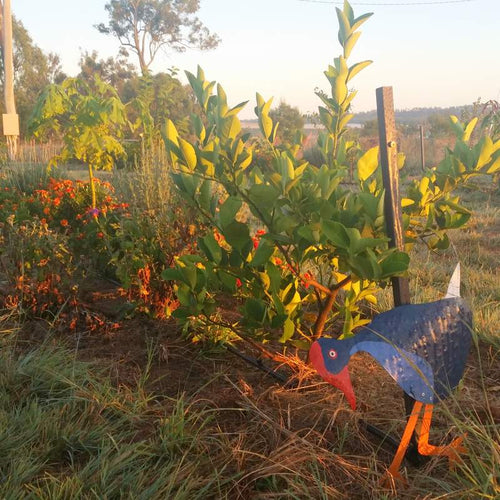How I use herbs - comfrey
Comfrey (Symphytum officinale) is a hugely useful herb and very easy to grow - in fact it can be too easy and has a reputation of taking over gardens! Its a herb that I think has a place in every garden.
How to grow Comfrey
Comfrey is propagated by root-division, so all you need is to find someone else who grows comfrey and take a small amount of root and leaves, plant them and you will never be without some comfrey in your garden. Comfrey dies back in frost, and prefers moist cool conditions, so does not do well here in a hot dry summer. If you have ideal conditions for comfrey (not frost and not hot) you may have trouble with it spreading like mad, and it can grow rather large, with huge leaves. You can either plan for this by planting it somewhere appropriate, or you can confine it to a pot. Comfrey is so useful you might not find its possible to have too much comfrey!
How to use Comfrey
Comfrey is propagated by root-division, so all you need is to find someone else who grows comfrey and take a small amount of root and leaves, plant them and you will never be without some comfrey in your garden. Comfrey dies back in frost, and prefers moist cool conditions, so does not do well here in a hot dry summer. If you have ideal conditions for comfrey (not frost and not hot) you may have trouble with it spreading like mad, and it can grow rather large, with huge leaves. You can either plan for this by planting it somewhere appropriate, or you can confine it to a pot. Comfrey is so useful you might not find its possible to have too much comfrey!
| my comfrey plant in its pot and tray to keep the soil moist |
How to use Comfrey
(Isabell Shippard devotes over seven pages to comfrey in her excellent book "How can I use Herbs in my Daily Life?", so I will just try to summarise the main points here).
- Comfrey has deep roots and accumulates minerals from the sub-soil, as well as being high in nitrogen. This makes it useful for compost, mulch and to make a liquid fertiliser brew for the garden. In a permaculture food forest or swale, comfrey can be used as a self-mulching plant to provide nutrients to other plants.
- My comfrey plants don't often flower, but the when they do, they provide food for bees and other beneficial insects.
- Comfrey is high in protein, in fact higher than most grains and legumes, and combined with the nutrient content, makes an excellent animal fodder. I have had to fence mine, because Bella and the chickens were helping themselves. If I could get it to grow over a larger area, it would be great for the chickens as an alternative to grain. Bella didn't like it at first, so I had to shred it and hide it in her grain ration, but now she will eat it by the armload if I have any spare.
- Comfrey is also known as Knitbone, Woundwort, Healherb and All Heal. It has a reputation for soothing skin, and healing bones, tissue and skin. It can be applied as a salve, in a tea or a poultice.
- Some people also eat comfrey, and really, if its ok for animals, then it should be ok for us too, but do see my cautions below (and note that it has a kind of prickly leaf, so best chopped small!)
| Comfrey in the garden a couple of years ago after it rained |
Controversial Comfrey
There is a lot of confusion about the safety and legality of comfrey in Australia, so here's the facts. Comfrey is listed on the "Poisons Standard", which is Australian federal govt legislation that classifies poisons and restricts how they are sold, packaged and labelled. It does seem kind of odd to put a plant on there with all the drugs... but anyway, the point is that sale of Comfrey for therapeutic or cosmetic use must be labelled with "caution", because of some drama back in the 1980s when someone decided that it was poisonous due to alkoloid content. Many plants contain alkoloids and it really depends how much Comfrey you're planning on eating (google it and decide for yourself, this is also well explained in Isabell's book). While the sale of products containing Comfrey for therapeutic use is restricted, you should still be able to buy it to plant in your garden and use it how you want. As you can grow it by dividing, and it spreads quite quickly, if you know someone with comfrey, you can just grab a small section of root from their plant and replant it in your garden. That's how I first got some, I've never had to buy it.
Do you use Comfrey? Any tips? Did I miss anything?























Leave a comment